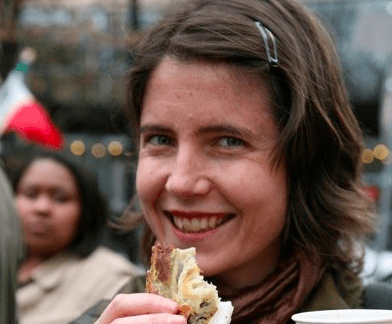Visit the main Portland Farmers Market on any given Saturday morning and you’ll see tables spilling over with rainbow chard, beets, leeks and all kinds of lettuce. You’ll see vendors selling homemade salsa and tortilla chips, and cheesemakers plying their brie. It’s a scene that’s become part of America’s urban fabric. Today, there are over 8,140 farmers markets around the country.
But it wasn’t always this way.
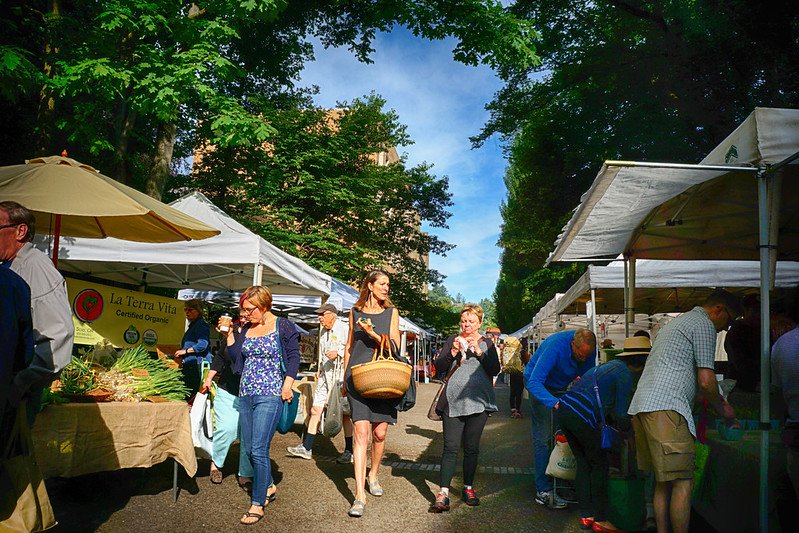
America’s interest in fresh, local food was well underway by the time Michael Pollan’s influential The Omnivore’s Dilemma became a bestseller in 2006 and Michelle Obama started a kitchen garden at the White House. But just a few decades prior, the beloved farmers’ market was all but extinct in the US. Its near death — and spectacular comeback — shows how social movements, economic shifts and government policy can converge to resurrect a food system that’s healthier for people, the planet and cities themselves.
Changing tastes
Though farmers have been selling their produce directly to eaters for as long as agriculture has existed, informal food markets have been around in what is now the United States since the 1600s. These ad hoc gathering spots for vendors — and more structured ones held at town squares — fell out of favor with the advent of the “general store” in the 1700s and the grocery store in the late 19th century.
At the same time, advances in food processing and packaging, like canning and quick freezing, as well as shipping and transportation, allowed more types of food to fill the shelves at these grocers. The A&P Company, founded in 1859 as a chain of small coffee and tea shops, likely became the first modern supermarket when it introduced the economy store concept in 1912. Supermarkets quickly grew in number and popularity — A&P reportedly opened a new store every three days between 1912 and 1915 — to become the dominant mode of food shopping by the mid 20th century.
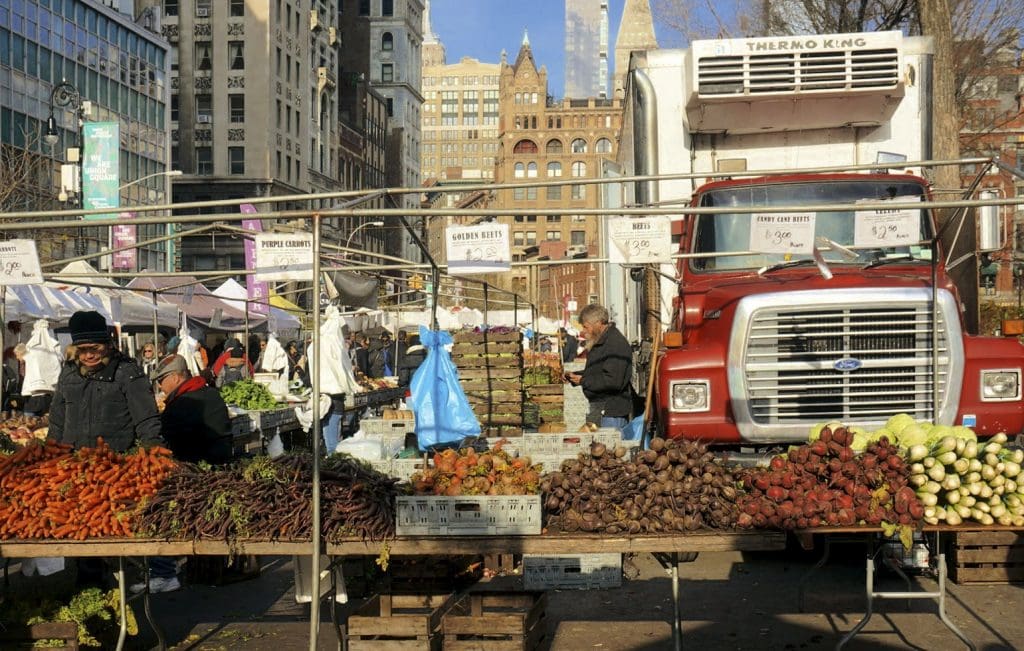
At the same time, farmers’ markets were facing stiff competition from the automobile. After World War II, federal funding built the transcontinental highways, “the eventual backbone of modern American food distribution,” writes Lisa M. Hamilton in a 2002 essay for Gastronomica. Now, California avocados and artichokes could be shipped to New York City in a few days’ time. Meanwhile, individuals used these new roads to flee to the suburbs in massive numbers, settling far from the cities where farmers markets are typically concentrated. “By the 1960s, the dual pressures of suburbia and competition from agribusiness were squeezing small farms out of existence, and very few farmers markets remained,” writes Hamilton.
At the same time, however, a nascent movement to keep farmers’ markets from vanishing entirely was beginning to sprout. Perhaps not surprisingly, it started in California. After World War II, a man named John Brucato started one of the first modern-day farmers’ markets in San Francisco, on the corner of Market Street and Duboce Avenue. As writer April White tells it, affordable produce was scarce in San Francisco during the war — families relied on Victory Gardens and ration coupons. And yet just 50 miles away, farmers’ apples and pears were rotting in their fields.
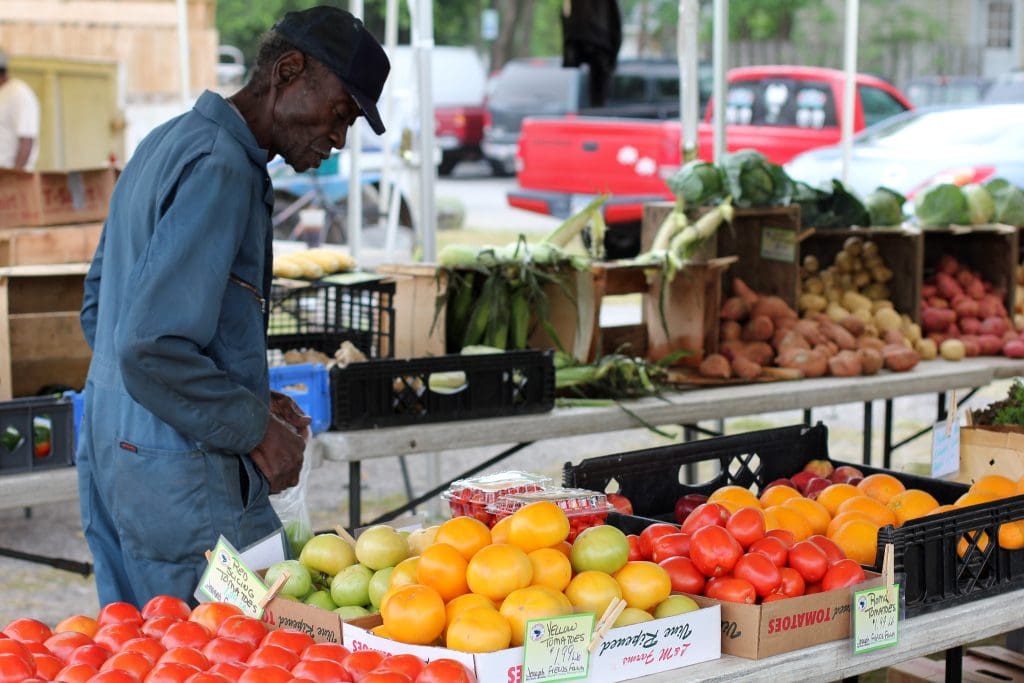
“In 1943, when [pear farmer Joe] Sanchetti arrived in San Francisco with his surplus pears, the idea of a farmer selling his produce directly to the customer was nearly unheard of, a relic of the distant past,” writes White in JSTOR Daily.
Sanchetti was one of six farmers who showed up at Brucato’s market on that Thursday morning in August 1943. The enterprise was a raging success. The six farmers sold out within two hours, earning 25 cents a pound — five times more than what the canners were offering. The next day, 25 farmers showed up, hawking produce out of the back of their trucks. Customers were thrilled, and the farmers were, too. But the city’s grocers and wholesale produce sellers, not so much.
These merchants leveled accusations of unfair competition and tried to get Brucato’s market shut down. But the city government argued that the market was a remedy for war-time food shortages. And its enthusiastic customer base had the final say on the matter. On November 6, 1945, two months after the end of the war, San Franciscans voted overwhelmingly to allow farmers markets to become a permanent fixture of their city.
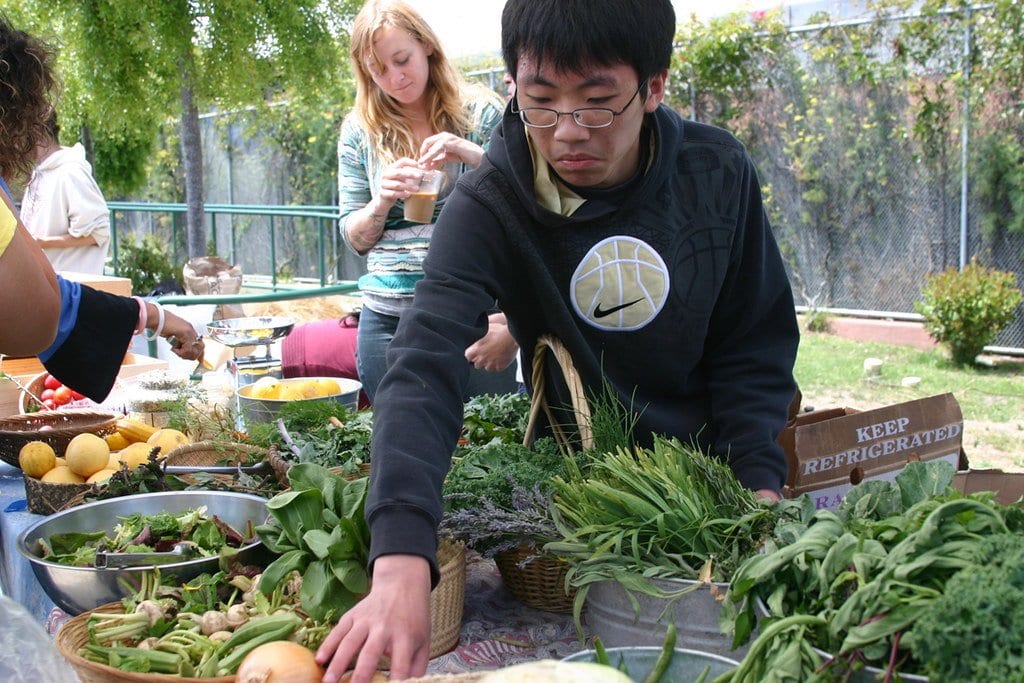
Not long after that, a growing number of people across the U.S. began to question industrial farming and corporate control of the nation’s food supply in general. The publication of Rachel Carson’s Silent Spring in 1962 only fueled this mistrust, as it showed how DDT — widely used in agriculture at the time — was poisoning not only plants, insects and other wildlife, but humans as well. “Can anyone believe it is possible to lay down such a barrage of poisons on the surface of the earth without making it unfit for all life?” Carson wrote. “They should not be called ‘insecticides’ but ‘biocides.’”
Seeking no-spray fruit, American eaters began to source their produce from nearby farms that did not use pesticides or herbicides — or from urban markets like Philadelphia’s Reading Terminal Market, founded in 1892 (and still around to this day). By 1970 Joni Mitchell’s “Big Yellow Taxi” was the anthem of the day: “Hey, farmer, put away your DDT/Give me spots on my apples, but leave me the birds and bees please.”
“The ‘70s were a time of blossoming of youth desiring to go ‘back to the land’ and of food cooperatives and community gardens, as well,” says anti-hunger activist and author Frances Moore Lappé. “Farmers’ markets were part of this wide awakening to our link to healthy farming and eating.” Lappé’s bestselling book Diet for a Small Planet, published in 1971, had an enormous impact, rallying eaters to eat whole foods and lower on the food chain.
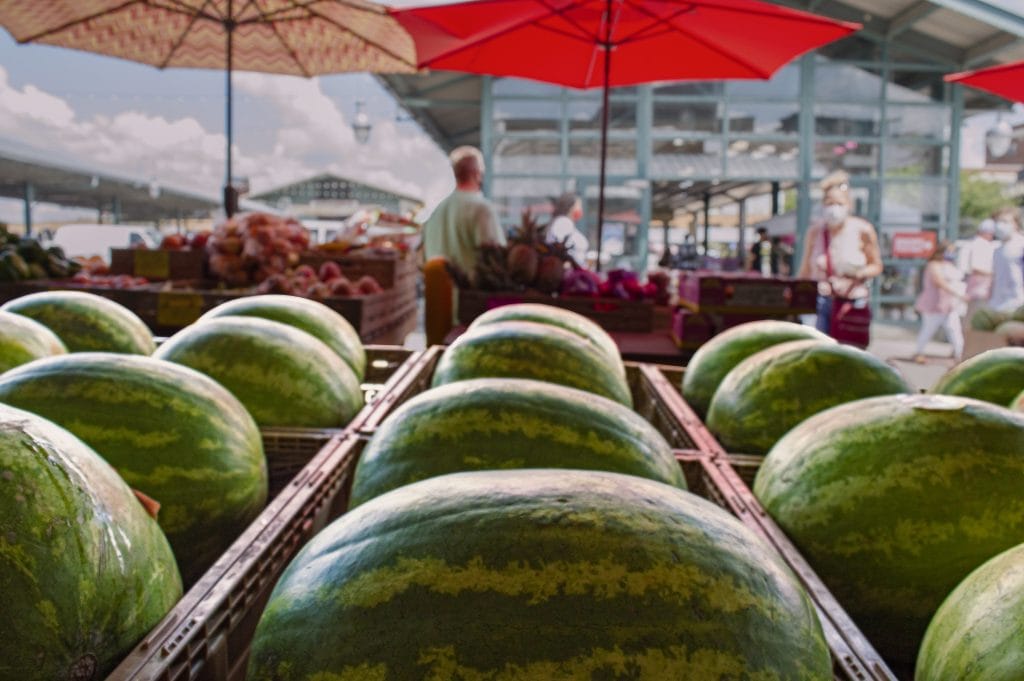
New policies emerged to accommodate the shifting public mindset. In 1976, Congress passed the Farmer-to-Consumer Direct Marketing Act, which explicitly protected farmers markets, roadside markets and pick-your-own establishments, and funded them through the states. Two years later, another pivotal piece of legislation would help level the playing field for California’s small farmers. Since 1915, standardization requirements regarding weight, ripeness, labeling and containers had made it tough for these growers to compete with the major food companies. Responding to a push from small farmers, consumer activists, and anti-hunger groups, Governor Jerry Brown passed the Direct Marketing Act of 1978 which allowed farmers to sell their produce directly to consumers.
Crushed by negative news?
Sign up for the Reasons to be Cheerful newsletter.With such policies proliferating and the national mindset around food systems shifting, perhaps the final piece to fall into place was the changing nature of cities themselves. Jane Jacobs’ book The Death and Life of Great American Cities had been published a decade earlier, in 1961, and its impact reverberates to this day. An indictment of the gargantuan-scale urban planning ethos of the mid 20th century, it was a call to resurrect walkable, human-centric cities. The movement that sprang up around her ideas helped breathe new life into urban areas by prioritizing pedestrian-friendly plazas, neighborhood parks, sidewalks and street-level commerce. The farmers’ market was a perfect fit for this new, old way of thinking.
Today, there seems no end to our hunger for farmers markets — or for the just-picked, often organic produce we find there. Maybe that’s because it’s not just the delicious food we’re returning for. There’s something special about buying food directly from farmers. As author Paco Underhill writes in his 2022 book How We Eat, “Selling what they grow directly to the person who is going to consume it is an affirmation of the skill and effort required in farming. If a farmer sells produce to a wholesaler, there may be pride in its quality or pleasure in the monetary transaction, but the primeval joy of one person handing food to another is missing.”






